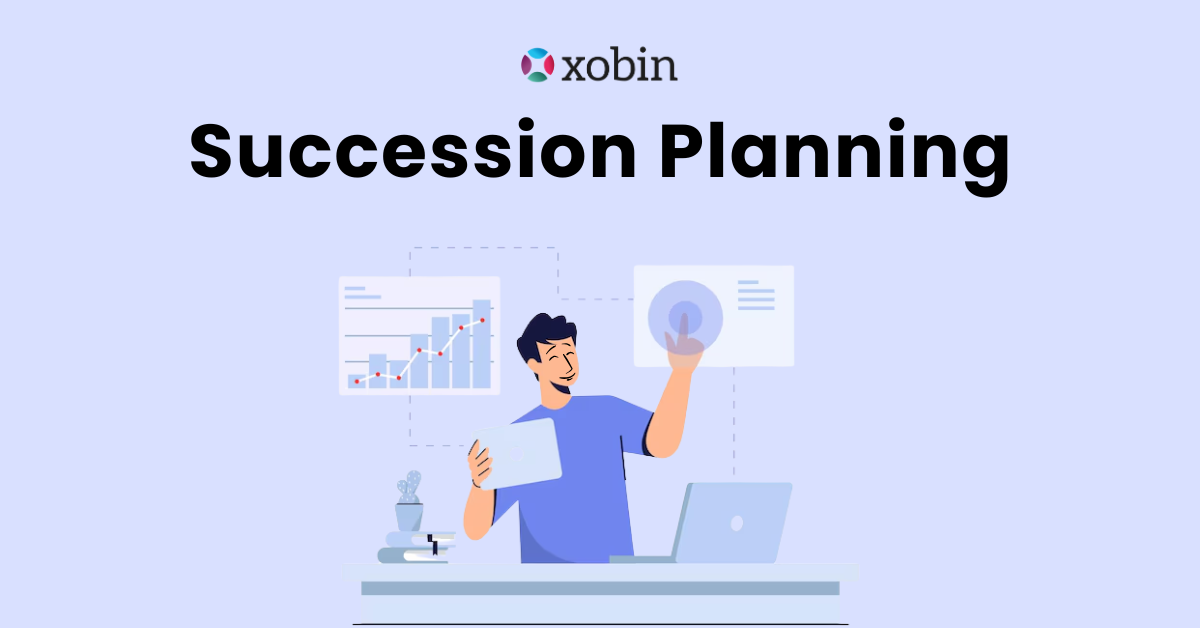XOBIPEDIA
HR Glossary

A talented workforce trained and ready to move to the key positions when the current occupants leave is very important, to run an efficient business. Without a solid succession plan, even a successful business can run off a cliff.
Here are the important points you need to know about succession planning.
What is Succession Planning?
Succession planning is the process where an organization ensures that its employees are developed to fill each role key role within the company. In this process, the organizations make also make sure that there is no key role open for which another employee is not prepared.
This process ensures, that the business runs smoothly even after a change in leadership. It serves as an excellent tool to retain the strongest performers.
A succession plan is an ongoing effort, it must be reviewed and refreshed on a regular basis. It must be revisited annually to make sure that plan is on track and if any changes are required.
Why succession planning is important?
Succession planning provides a way to identify the key roles and people with the right skills, and the positions that may require feeling in a short period of time. It is also an important part of the talent management process.
According to reports, the major reason why many leaders don’t work out is that they’re selected using improper criteria. Hence, organizations must be prepared for such situations. This may even include the process of employing an interim senior leader, who will be required to handle a number of tasks and duties to get used to the role.
Succession planning is designed to help organizations recognize future leaders, mentoring and training them. It also provides a way to cut recruitment costs, which in return, helps the organizations to manage recruitment.

Steps to create succession planning
Here are some steps to ensure that key positions are filled successfully.
Identify the key positions and requirements
Begin the succession planning process by identifying the qualifications that are essential to the company’s success. It can include years of experience, qualifications, soft skills, etc. which may have an impact on the company’s success.
Identify the key positions which will become vacant in the near future. The top-down approach can be taken, and the succession plan starts from CEO and goes further down the organizational chart.
Develop job profiles
The job profile must constitute of the following
- The tasks the key position currently performs.
- A qualification that the current person in the position has.
- Potential evolution of the role as time changes.
- Additional skills that may be required in the future
Start the recruitment process using a succession planning
During the recruiting process, the process of succession planning takes shape. It helps in building the talent pool and providing the targeted upskilling programs for current employees.
Appoint a successor for succession planning
Whether internally or externally, this step signals the end of the process. This part of the process must be taken care of very carefully, as the chosen successor needs to be the right fit from multiple angles, and not based on whether they can do the job or not.
Hand over the position and document the transition
When the right time comes, a smooth transition of the position must be completed to avoid any problems along the way.
The documentation of the process becomes crucial, in order to note how the position was filled and to inform the future processes too.
We hope this article helped you. Explore our HR Glossary for more interesting articles;

Recommended Content

Video Interviews can simplify your hiring
Don’t let a packed schedule be a hindrance in recruitment. Use structured interviews with the power of video to screen applicants. Understand the communication skills, motivation, and job skills using video interviews.

Pre-employment Testing: The Complete Guide
Move over from pen-paper based tests and manually checked assignments to pre-employment assessments. Democratize your organization hiring by screening for skills before you interview.

How can Employers adapt to Remote Hiring
With most jobs going remote, your best applicants could be in Melbourne or Miami. From remote screening and virtual interviews to remote onboarding, Learn the best practices to get started.


